Carefree Eggshell is a premium plus, 100% acrylic enamel for exterior and interior surfaces. This top-of-the-line enamel provides block resistance with excellent scrubbability and durability. Carefree Eggshell exhibits exceptional stain and dirt resistance with excellent hide and adhesion. Carefree can be used in areas where oil-based products were previously required. Excellent choice for use on commercial, residential, institutional, or custom painting projects. NOTE: This product contains ingredients that resist the growth of microbes on the surface of the paint film.
Carefree Eggshell is a premium plus, 100% acrylic enamel for exterior and interior surfaces. This top-of-the-line enamel provides block resistance
Metal Pro Primer is a premium plus, low VOC, fast drying, waterborne, acrylic coating for interior or exterior use. This product offers excellent adhesion to metal surfaces, particularly galvanized metal; hence protecting the metal surface from oxidation. This product can be top coated with a variety of products but for the best protection of metal surfaces top coat Metal Pro with Protec Alkyd Emulsion Enamels (9700 Satin, 9800 Semi-Gloss, or 9900 Gloss).
Metal Pro Primer is a premium plus, low VOC, fast drying, waterborne, acrylic coating for interior or exterior use. This
The Carefree line is a premium plus, 100% acrylic enamel for exterior and interior surfaces. This top-of-the-line enamel provides block resistance with excellent scrubbability and durability. Carefree exhibits exceptional stain and dirt resistance with excellent hide and adhesion. Carefree can be used in areas where oil-based products were previously required. Excellent choice for use on commercial, residential, institutional, or custom painting projects.
The Carefree line is a premium plus, 100% acrylic enamel for exterior and interior surfaces. This top-of-the-line enamel provides block
Painting wood protects it from the elements, from cracking and seals it so it ages well. Depending on if the wood is interior or exterior, different paints should be used for best results. Vista Paint has several wood paints that will protect your project and make it look its best.
First, determine if your project is going to be interior or exterior. If it’s something that will only spend some time outside, like a folding table, that still should count as exterior since it will require protection from UV light and water.
Picking your paint is the essential first step. While stain will let some of the natural wood grain show through, paint is opaque and will hide everything but texture.
Unvarnished or painted wood is pretty porous, so a primer is required. Latex and acrylic primers both work well with wood since they dry more flexibly. Vista Paint primers include the 4000 Uniprime, which works for interior and exterior use. It comes in white and can be lightly tinted depending on the paint color you’ll be covering it with.
Another effective primer is the 8000 Carefree Prime-ZALL. This primer is uniquely formulated to paint on any interior or exterior surface regardless of if it has been painted over once before. It’s also low VOC, making it ideal for indoor use.
When choosing paints, decide if you want any gloss or prefer a matte finish. Most wood tends to look best with matte because it looks more natural, but you can also choose a finish with a light eggshell for some iridescence.
Exterior wood tends to look best with a matte finish, so Vista Paint recommends the 1900 Weather Master for exterior use as it resists mold and mildew and can be customized with any color.
The 1200 Coverall Low Sheen is an interior enamel topcoat that can be applied over previously painted wood. It’s available in white and many pastel shades.
The V-PRO 300 in Eggshell and Flat has almost no VOCs and is easy to clean, making it ideal for high-touch wood surfaces like doors and furniture. These are best for interior use.
Make sure the paint you select says it is for use on wood. Not all paint is and if you use the wrong one, you’ll have to do a lot of sanding to remove it. If you’re not sure about what gloss you want, you can test a small patch on a piece of scrap wood to see how it will look.
Preparing wood correctly is key to having a beautiful final product. Before applying primer, make sure the wood is lightly sanded. This gives the primer something to cling to. If the wood is worn from being outside, it may benefit from being power washed to remove any mold and mildew.
Make sure you’ve covered your work surface if you’re painting indoors to protect your floors. A plastic drop cloth is helpful here.
Check over your wood project before painting. If there are any deep gouges or cracks that need puttying, fill them now and make sure you allow enough time for the putty to dry before you paint.
If you’re painting something that has previously been painted, give it a good cleaning with some TSP. This is a strong degreaser and phosphate that is helpful for removing oil, grease and other stains from wood. If you prefer a non-phosphate cleaner, there are several TSP substitutes you can consider.
If this is an interior project, sanding is still helpful but new wood doesn’t require power washing. After you’ve sanded, wipe down the wood with a dust cloth to pick up any stray particles that will interfere with the finish.
You don’t need to sand off the previous finish fully. Using 180 grit sandpaper, give the flat areas a pass with an orbital sander. This creates some rough spots for the paint to cling to and results in a better finished project. Use sandpaper by hand to scuff the edges, details and corners. You can use less pressure here especially if you don’t want to round off your corners.
Clean the sanded area with shop vac or dust cloth, taking care to pick up all debris. Tack cloths are great for small areas that are hard to reach.
Now it’s time to load up on your primer of choice and give the wood a healthy base coat. Use the right roller or brush and apply it liberally, pressing the roller into the wood so any low spots are filled.
Your first coat of primer may look streaky after it dries for about half an hour. You can apply a second coat of primer for thicker coverage.
After your primer has fully cured, sand it with a fine sandpaper like 220 and give it a light scuffing. Don’t remove too much primer. Clean up like you did when you first sanded, taking care to remove as much dust as you can.
Exterior projects like wood siding don’t typically require sanding between layers since you’re not trying to achieve as smooth a finish as you would desire for furniture.
Now you can finally add your color! Apply your paint of choice in even strokes, taking care not to apply with too heavy a hand. Rollers make this process much faster for interior painting. If you’re painting a large wooden exterior, you can use a paint sprayer with some thinner to speed up the work.
Two or three coats may be necessary to get the color saturation you’re looking for. For highly detailed surfaces like some furniture and crown molding, a paintbrush is best for getting into all the tiny spaces.
Painting wood is easy with the right preparation and tools. The finished project is rich in color and easy to clean because of the waterproofing wood paint provides. Additionally, it’s easy to use paint to modernize old wood furniture that no longer matches your home.
Painting wood protects it from the elements, from cracking and seals it so it ages well. Depending on if the
You’ve just been through a big move after spending weeks packing and organizing. However, you won’t be able to feel happy and comfortable in your new home until you’ve resolved one important issue: the paint. You love your new home, after all, you decided to buy it. However, the paint color is totally off. It doesn’t match your home décor or your personality and makes you feel slightly off about living there. You don’t want to pay for the added expense of hiring a professional home painter, so you’ve decided to do it yourself. However, you aren’t sure what you’re getting yourself into.
How long does it really take to paint a room? After all, you’ve just put in countless hours moving into a new house. The last thing you need is a project that feels like it is never going to end. This article will help you know how long it really takes to paint a room, and with that information, you can calculate the amount of time it would take to paint your whole house. So, read on, and good luck with your projects that will make your house feel more like a home!
You’ll need to start by figuring out the actual size of your room to calculate the amount of time that it will take to paint your room. You can calculate the square footage of your room by measuring the length and width of your room. After you’ve taken those measurements, multiply them. For example, if your room is 10 feet long by 12 feet wide, you’ll multiply those and end up with 120 square feet. If you want to be super exact, you can also try to measure the square footage of window and door gaps. However, a rough estimate of the square footage of your room should help you to know how long it will take to paint.
The average-sized room in a house will take around 5 hours to paint if all of your supplies are set up and good to go. A larger room could take closer to 7 hours. You might need to add on another hour or two for setting up drop cloths, laying down painting tape, priming your walls, and mixing up your paint. Additionally, if you have to do any repair work to your wall, such as filling in nail holes or scraping off debris, you may have to add another 30-60 minutes to your process. So, it isn’t an exact science to know how long it will take to paint your room, but you can use these details to make a rough estimation.
If you are sure you want to paint your room but aren’t ready to commit to the average time that it will usually take, there are a few things you can do to speed up the painting. You can use extra-long paint rollers that will cover more space when you use them. Using a high-quality paint primer can help you to get a great result in fewer coats of paint. Also, having more people join you in the effort will also help your painting to go more quickly.
You’ll also need to calculate how much paint you’ll need for your project. You can always get a rough estimation from someone at a paint store, but you can also use your square footage calculation to help you. Most gallons of paint will cover about 350-400 square feet of space, depending on how many coats you have to do. From that, determine how many gallons of paint you’ll need, and get to work painting!
Once you’ve decided to move forward with your painting project, you’ll need to gather together some supplies that will make the project a lot easier. Here is a list of the basics that you’ll need for most paint jobs.
You’ve just been through a big move after spending weeks packing and organizing. However, you won’t be able to feel
Imagine that you have just walked into a newly built house. Other than the fact that you already know that the house is freshly built and ready to be lived in, you can probably sense another tale-tell sign that will indicate that this property has just been completed: the smell of paint. Paint, specifically paint used in homes, has a very distinct smell. That smell can even be a little overpowering at times, especially if you’ve been painting all day or if you’ve spent an extended amount of time in a space with fresh paint.
Have you ever stopped to think that the overpowering smell of paint might be an indication that there are chemicals that are being released into the air and absorbed into your skin that could harm you? Unfortunately, there is some truth to this. Many paints have VOC, which could be emitting harmful substances into the air around you, which could reduce your good health. Of course, when you’re working on making your home more beautiful, you don’t want to inadvertently cause yourself or your family members to have health problems. For this reason, you should be well aware of VOC levels and which paints you should use to prevent these issues. Here is what you need to know about VOC so you can better choose which paints to use in your next project.
VOC stands for Volatile Organic Compounds, meaning that paints with VOC contain volatile organic compound chemicals that can be evaporated and absorbed into the surrounding air and environment. VOCs help paint materials to have a smooth movement as they are shifting from container to wall. They help paint to go on any material much more cleanly, flowing in a satisfying way. Unfortunately, lots of VOCs have negative side effects.
Lots of types of VOCs have substances, such as carcinogens, that have been known to cause chronic illnesses or even cancer. As a result, these VOCs can negatively impact the indoor quality of air. It can also be absorbed by contact or inhaled, which can be potentially harmful to your health. Unfortunately, VOC chemicals are often found in paints, cleaning supplies, and other substances. For this reason, it is important to be vigilant about the paints that you’re using in your home and even the paints that have been used in your home in the past. For example, many homeowners have become more familiar with the dangers of lead paint. The health risks and issues presented by lead paints have become much more well-known over the past years. Similarly, you should be aware of the dangers of using paints with high VOC levels.
Have you ever gotten a big headache after you’ve been working on a painting project? If so, that is exactly the type of issue you could be dealing with when you use paints with high VOC levels. These paints can cause headaches, asthma, and other, more serious health complications. If you’re shopping for paint and trying to find good paint with low VOC levels, make sure that you read the labels and do your research before purchasing. A good, low VOC level would normally be around .5 mg/m3, with .3 being an even safer and lower level of VOC. When you paint a surface in your home, VOC is released into the air as the paint is drying, hence that strong, distinct paint smell that you can detect. However, there is a smaller, additional amount of VOC that can be emitted from the paint even after it has completely dried. Sometimes, paint will release harmful chemicals for years after the paint job has been completed. Prior to reading this article, you may not have been aware of the health risks associated with VOC levels, resulting in a lack of caution with regard to paint that has recently dried. Using low VOC paint in your home can help to prevent any possible health risks or complications that could occur from the chemicals in VOC.
If you often shop for paint but aren’t used to looking at VOC levels first, it can seem a little bit stressful. You might even procrastinate your next painting project so as to avoid buying paints with VOC that could be potentially harmful to you or your family. True, if you don’t know how to tell what paints have low VOC, you might avoid buying paint entirely. Luckily, there are certain paint brands that consistently use low VOC levels, making their products safer to use in any type of environment or residence. Some brands even omit VOCs entirely, making their paint products much less stressful to use. One of these trustworthy brands is Vista Paint. Vista Paint has a huge variety of trendy and attractive paint colors. Their paint shades are vibrant, durable, and long-lasting. Best of all, they have low VOC levels, which makes them great and safe to use for any project in need of a little pop of color. Their manufacturing team has taken great measures to carefully create their paint products in a way that won’t put you at risk when you use them.
So, next time you’re gearing up to work on a home improvement project or give new life to an old piece of furniture, remember these tips about VOC levels and paint. If you don’t want harmful chemicals to be released into the air that you breathe, then don’t use types of paint that have high VOC levels. This will help to keep you, your family, and your home environment safer and healthier. To further simplify things for your DIY project planning, try to consistently stick with paint brands that consistently create paints with safe, low VOC levels. Using paint brands such as Vista Paint will leave you with a gorgeous, vibrant paint job without any accompanying unwanted health risks.
Imagine that you have just walked into a newly built house. Other than the fact that you already know that
Metal is one of the more difficult surfaces to paint because most paint doesn’t adhere well to it. It also is prone to rust and oxidizing, so any paint you choose must be able to protect the metal. Preparation is also key to protecting metal with paint. Luckily, Vista Paint has a line of paints specially formulated for use on metal.
Spray paint is the usual go-to for metal painting, but the application is uneven, which results in a streaky finish. Brush-on paint takes longer but the finished product is much higher quality.
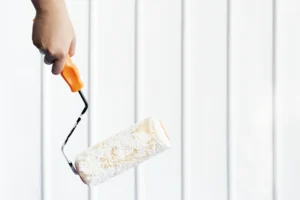
Brushes and paint trays are ideal for painting metal since they make for even application. If the metal has been painted in the past, it will need to be scuffed and cleaned to remove old paint and oil. An N-95 mask is handy here to protect your lungs from particulate matter.
Rust remover and acetone may also be required if the metal has visible rust. Painting over rust will cause the rust to bleed through your new paint, so it should be treated and removed.
You also need to identify your metal as ferrous (containing iron) or non-ferrous. Ferrous metals are steel, cast iron, wrought iron and are often prone to rust. Non-ferrous metals include aluminum, copper, zinc and stainless steel.
Finally, you need the right primer and paint. Vista Paint recommends 4800 Metal Pro Primer for non-ferrous metals. It protects them from rusting and improves adhesion so the paint doesn’t peel off after application. For ferrous metals, Vista Paint recommends 9600 Protec Metal Prime. This is not recommended for galvanized surfaces, but it does protect ferrous metals from corrosion and improves the overall finish.
For paint, Vista Paint recommends 9700-9800 Protec Metallic, which is formulated especially for interior and exterior metal surfaces. Take care not to shake the container and don’t store it near any open flames.
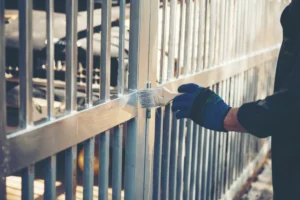
Once you’ve identified your metal, any old paint will need to be removed with a wire brush. A heavily rusted area needs rust remover applied to the surface to eliminate any remaining rust and allow it to be scrubbed off the surface.
An acetone-dipped rag can remove grease and oil from the metal’s surface, making it ready to receive primer.
Scuff the metal if it’s smooth with a scuffing pad. This gives the primer something to cling to. Scuffing isn’t necessary for corroded surfaces as they are already rough to the touch and will hold primer readily once prepared.
Galvanized metal has zinc in it, so scuffing galvanized metal can actually remove the zinc layer, leading to further rust in the future. Galvanized metal shouldn’t be scuffed or sanded. Wear an N-95 mask while scuffing metal to avoid inhaling particulate metal.
Priming metal seals away any rust and protects it from future damage. It also acts as a moisture barrier, preventing the introduction of new rust. Make sure to choose the right primer for your metal. Make sure your primer is compatible with your intended paint.
Read the label carefully to review drying times and cure times. If you paint over the primer before it’s ready, then your paint can peel or flake. By following the instructions to the letter, you will get the best results out of your paint.
Metals going outside may need a second coat to provide extra protection against oxidation. Apply the primer evenly, making sure that everything is covered. Primer can be white or rust colored.
Once the primer has dried fully (out of direct sunlight and wind), you can add your paint. Apply the necessary number of coats for the coverage and color saturation you’re wanting. Allow the paint to dry between coats. It will need at least 36 hours to fully dry. Make sure it’s not exposed to direct sunlight while it dries.
Highly pitted metal may not be structurally sound enough to take paint.
Metal paint both decorates and protects metal from further corrosion. For metal paint indoors, the environment is generally regulated unless the metal is stored in a bathroom or garage. Metal outdoors is exposed to varying levels of moisture, sunlight, temperature swings and more.
By painting the metal, you are protecting your item for the long term. Furniture with metal parts will resist corrosion and rust, making them structurally safe and sound.
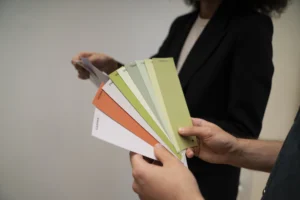
While most metal primers are either white or rust-colored, you have a lot of options when choosing a color for your paint. Metal paint tends to look better with a matte finish so it looks powdery. Some pigment can include iridescence or a little gloss to add a shiny finish.
Consider how your chosen color will look in different lighting and how it will function. Metal furniture, for example, may need a lighter color so it’s less hot to the touch while metal frames can use darker colors to best effect.
Prepare the metal outside if you can – that includes scuffing. This makes for easier cleanup. If you have to scuff indoors, then use a drop cloth and a shop vacuum to clean up any residue so your final product is clean and easy to paint.
If you’re painting outside, avoid painting in direct sunlight. Heavy sun can dry paint too quickly, leading to your final product drying with streaks. Avoid painting in the wind for the same reason. Wind can also blow debris onto your wet paint, giving you a new area you may have to sand and repaint.
Metal paint is a colorful alternative to clear coats and can customize your outdoor furniture, interior decorative pieces and wrought iron fencing to your liking. A fresh coat of metal paint not only preserves your items for future generations, but it improves the appearance and texture. Think about the times you’ve touched rusty metal – or worse, sat on a rusted chair. A fresh coat of paint will make everything more visually appealing and practically useful.
Metal is one of the more difficult surfaces to paint because most paint doesn’t adhere well to it. It also
Are you looking to freshen up your home’s interior in the new year? Luckily for you, now is the perfect time to start a paint project. It will be easier to paint and ventilate your home as the weather is warming up, and then your space will be in tip-top shape just in time for all the parties, hosting, and gatherings that happen during the summer months. So now that you’ve decided that it is the perfect time to dedicate some time and money to an interior paint project, you just need to find the right paint. The only problem is that choosing paint is a lot easier said than done, right?
Luckily, we’ve compiled some of our favorite spring paint colors that are going to be very popular this year. No matter what your personal interior design style is, there should be a paint color that will match anyone’s interior space. And maybe you’ll be creatively inspired and decide to go with a newer, bolder paint color this year! So, without further ado, here are our must-have spring paint colors from Vista Paint.
 |
Lightest BlueStart off your spring season with the lightest, airiest blue. This blue will make your room feel large and trendy. This blue also has a slightly warm gray undertone, making it a new neutral to match with bolder colors. Options from Vista Paint are Surf, Cool Sky, and Simple Serenity. |
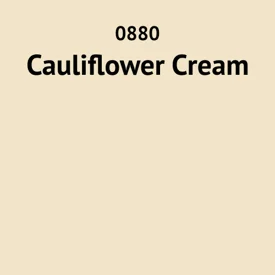 |
Creamy YellowBright, bold yellows haven’t been popular for a few years, but this creamy yellow is definitely going to turn some heads this season. Imagine a warm cream color that has just a touch more yellow than most creams or ivories. This light yellow can make any space feel cozy and inviting and well feel fresh and timeless at the same time. Options from Vista Paint are Cauliflower Cream, Perky Tint, and Honey Cream. |
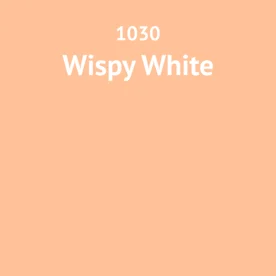 |
Beige-y PeachThis peach isn’t as pink or rosy as other shades of peach. Instead, this peach is a little more faded with beige and tan undertones. While it brings warmth and a fun color pop, it isn’t too overwhelmingly pink. Options from Vista Paint are Wispy White, Apricot Spring, Shooting Star, and November Leaf. |
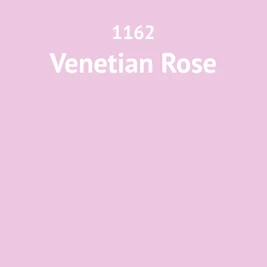 |
Pastel LilacDon’t forget to add a touch of purple! This pastel lilac will be perfect for this time of year. It is just light and bright enough to make your space feel open and clean, but it also has enough color to stay current and popular through the summer. Options from Vista Paint are Venetian Rose, Baby Girl, Pink Heath, and Pink Beauty. |
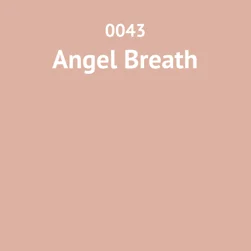 |
Pink BeigeIf you want a more subdued peach option, you might like a pink beige instead. This color is a light, creamy tan with the slightest hint of pink. This adds a romantic, feminine touch to the color that makes any space feel bright and unique. Options from Vista Paint are Angel Breath, Sand Island, Dainty Debutante, and Antoinette Pink. |
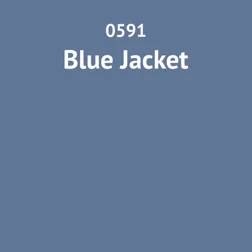 |
Muted NavyTo achieve more depth and variation, include a muted navy. This won’t be as dark or as bold as a traditional navy but instead will be a little bit lighter with a faded touch. This gorgeous color can pair well with any of the light, springy colors above. Options from Vista Paint are Blue Jacket, Madonna Blue, and Blue Depths. |
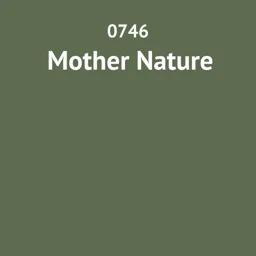 |
Deep Olive GreenFinally, to add some contrast to your décor, fall in love with this deep olive green. In past years, sage green and light olive have been popular, but this year the depth and drama of deep olive green are here to stay. Options from Vista Paint are Mother Nature, Clover Patch, and Green Column. |
If you’re looking for a gorgeous, vibrant paint color that has been trending as of late, there are probably a number of paint stores that could mix it up for you. However, if you also want your paint to have increased durability and scratch-resistant qualities, you probably shouldn’t shop at just any old big box store. Shopping at a specialized paint store that is known for the quality of its product will help you to get the results that you really want to see from your paint job.
When you buy your paint from Vista Paint, you’ll always get affordable and long-lasting paint without sacrificing any quality. Their paint products are designed to be fade, scratch, and damage-resistant, making them a good fit for any home, even if you have lots of pets or kids. Vista Paint also puts a lot of work into creating and obtaining the most beautiful paint colors to keep up with timeless shades and current trends. To find the right color for your space, simply view their color palette and browse their products to find the color and quality you’re looking for. You can easily order paint color chip samples by filling out this form on their website. This could be especially helpful if you’re having difficulty deciding between multiple gorgeous colors for your space!
When you’re going to be painting by yourself, you’ll have to spend some time researching what supplies you’ll really need. One of these essential supplies might be primer. With certain types of paint, using a paint primer is the only way to guarantee that your paint will successfully and permanently adhere to your given walls or ceiling surfaces. There are different types of primers that pair perfectly with different types of paints, depending on the base of the products. You might also choose a particular primer depending on the type of material that you’re painting. A primer needed for a wood painting project will be different than a primer needed for drywall. For example, oil-based primer works really well on unfinished drywall surfaces.
To learn what additional supplies you’ll need to complete your painting project, check out our blog article on painting supplies!
Are you looking to freshen up your home’s interior in the new year? Luckily for you, now is the perfect
Let’s face it, planning out your home decor isn’t always as effortless as Instagram makes it seem. Choosing pretty colors that go together seamlessly can be quite tricky, especially as you’re changing your decor from season to season. Bolder colors, such as red, can be a bit more difficult to style without design experience and a careful eye.
If red is one of your favorite colors to decorate with, don’t worry. Many trendy color palettes include shades of red. You don’t have to feel like living in a perpetual Christmas shop. So, if you have red paint on your walls and need some color palettes to pair it with, you’ve come to the right place. Here are a few of our favorite color schemes for each season, all of which work very well with red.
Are you trying to spruce up your home for the spring? Popular springtime aesthetics often sport pastel and muted colors. Here are a few different shades of red and complementary color schemes to experiment with.
This color combo is a popular option as colors are starting to return to the world after winter. Yellow Shout, Cactus Valley, Precious Peony, and Tint of Rose are all beautiful paint color options from Vista Paint.
If you want a spring color scheme that is slightly more sophisticated, this is it. The light rose and gold in this color combo will lighten it up, making it feel spring-y and bright. With the addition of other colors, this combination could also work for other seasons. For paint color options from Vista Paint, check out Royal Wedding, Moonrose, and Goldenrod or Danish Pine.
This color combo is rosy and romantic, perfect for the spring season that is bursting with blooms and blossoms. Vista Paint has some paint colors that would be perfect including Wild Rose, Poppy Prose, Impatient Heart, and Pinkathon.
When summer comes around, many of your decorative spring colors should brighten and become more vibrant. Here are a few happy summer color schemes for you to consider.
If you love pink, then don’t be afraid to choose a red with a bold, rosy tint. Hot red-pink will look great in this color combo. A few fun color options from Vista Paint are Childhood Crush, Lucerne, and Lemon Peel.
If you love the bright colors of summer but don’t want to deal with so many colors at once, you’ll love this gradient color scheme. Endless Possibilities, Sari, and Albino are a few great color options from Vista Paint that fit this aesthetic.
Who says that red can’t be paired with cool colors? This color combo is so summery and stunning. For paint options, try Endless Possibilities, Puple Hollycock, and Island Moment from Vista Paint.
During fall, you can take plenty of inspiration from the autumn leaves that surround you. There are many beautiful shades of red (and accompanying colors) that you can use to decorate your home for the season.
If you love classic fall colors, this color scheme is for you. Try using The Best of the Bunch, Beeswax Candle, and Whiskers from Vista Paint for the best results.
For a little more creative variation, try this fall color palette. Vista Paint has some great paint color options including The Ego Has Landed, Hidden Glade, Peony Prize, and Mother Nature.
Similar to one of our summer color schemes, this color scheme has lots of variety of colors for a retro feel. From Vista Paint, try using Romp, Madonna Blue, and Berry Patch.
Different shades of red are definitely staples of the holiday season aesthetic. Here are a few winter color schemes that are sure to wow your guests and create the perfect, cozy, holiday feel in your home.
This classic Christmas-inspired color palette is sure to please many. Try Velvet Cake, Jungle Adventure, and Palest of Lemon from Vista Paint for the perfect colors.
This holiday color combo is a little more chic and sophisticated. You can use Vista Paint colors Party Time, Silent Sea, and White Shoulders.
If you want a holiday candy-inspired aesthetic, you’ll love this one. Vista Paint has some great options including Endless Possibilities, Tint of Rose, and Turquoise Tower.
Now, if you haven’t even painted your walls yet but you’re just trying to figure out if you can make red work in your home, here are a few hacks. You can order paint samples or chips from Vista Paint, have them shipped straight to your home, and try out a bunch of different color combos to see what works best in your space. When you’re trying to decide what color you like best, make sure you see the colors at different times of the day. When the light in your home varies, the shade of the paint colors will also vary. Leaving the colors up for 24 hours while you’re deciding can help you see what color works best for your space at any time of day.
When you’re buying paint products, make sure you find a paint brand that has low levels of chemicals such as VOCs. VOCs, or Volatile Organic Compounds, can emit potentially harmful chemicals into your home which could unknowingly put your health at risk. Shopping trusted brands can ensure that you find paint products that are low-VOC, eco-friendly, and safe to use in all environments. Vista Paint is a great brand that checks all of these boxes, and they always stock the trendiest and most beautiful paint colors.
Let’s face it, planning out your home decor isn’t always as effortless as Instagram makes it seem. Choosing pretty colors
Painting new drywall can be an invigorating (and nerve-wracking) experience. Drywall is a commonly used construction material that creates the shape of the walls and ceilings in most homes in the United States. Drywall has unique textures and absorption qualities that can make your painting experience differ a lot compared to painting wood, brick, or other materials. So, if you’re painting drywall in your home, you need to have the right tools and materials for your painting project to be successful. Whether you’re finally working on your unfinished basement, building your new construction home, or refreshing your long-time fixer-upper, you’ll need to know how to prep your drywall before painting it.
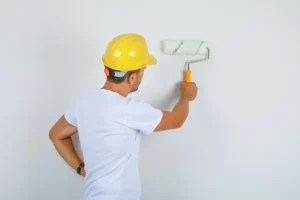
One of the most important steps to help you get a smooth, even result from your paint is to prep your drywall with a coat (or multiple coats) of primer. In this article, you’ll find all the tips you need when it comes to painting drywall, including where you should buy all the painting supplies you’ll need for your project. So, read on, and good luck with your drywall and paint!
If you don’t have a lot of painting experience, you might wonder what primer is or why you need to use it. Primer is a material that prepares your surface to properly adhere to the paint you’re going to put down. It is a base coat that will not only give your drywall a protective layer, but it will also help your paint to go on much more easily, smoothly, and evenly. Adding primer to your drywall helps your eventual coat of paint to last much longer with increased durability and resistance to any damage or scratches. Without primer, your paint likely won’t be able to sufficiently lock onto the surface of your drywall and might not last as long as you would like.
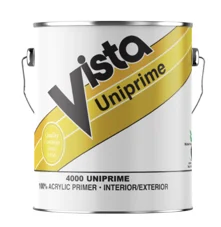
There are three different types of primers in the painting industry including oil-based primer, pigmented shellac primer, and latex primer. Depending on the type of paint that you plan to use or the type of surface you’re going to paint on, you might need a different kind of primer. For example, when you’re painting on a drywall surface, a latex primer will be the best choice for your product. An oil-based primer won’t work as well on a drywall surface, so pay attention to this important detail when you’re shopping for your painting materials.
Some paint products come with priming materials already mixed in, so you might not always need to use a primer depending on the project you’re working on. Of course, this depends on the product that you’re going to be painting. Because of the absorptive nature of drywall material, sticking to the recommended latex primer will ensure that you get the smoothest, most durable finish after your coats of paint dry.
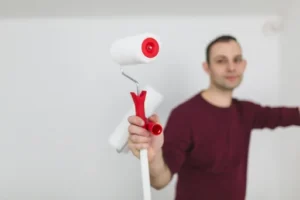
So, how many coats of primer will you need to coat your drywall? When you’re prepping your drywall, you can generally expect to add a minimum of two coats of latex primer. In some circumstances, two coats of primer might even be insufficient to get a bold, even result from your paint job. If your primer looks a little uneven or splotchy after two coats of primer, feel free to add one or two more coats before adding your paint. It doesn’t matter how you apply your primer. You can use a sprayer, roller, brush, or whatever will work best for your painting timeline and process. Just make sure you get the required number of coats of primer spread evenly on the drywall surface. This will make your painting day much easier and smoother!
If you aren’t sure whether you’ve added enough primer to your drywall surface, try adding a small but even portion of paint to your wall. Let it thoroughly dry and then examine it. If it looks splotchy or if it appears to have been absorbed rather than adhered to the surface as it should, that will be a good indication that you should add another coat or two of primer before you keep painting. Remember, drywall acts almost sponge-like as a material, and will unevenly soak up anything that you add to it. So, if you add your primer and texturing details first, the surface should be prepared to adhere to your chosen paint without soaking it up unevenly.
Now that you know why and how you should use primer, you need to know where to shop for your primer. When you want a high-quality primer that won’t require as many coats as cheaper primers, make sure to shop at Vista Paint for your products. They have a variety of primer products for different materials such as wood, metal, and more. Their premium primers are some of their popular products, such as their 7001 Acriglo Interior Primer, which pairs well with Acriglo finishes. For your drywall-painting project, you’ll want to use a latex primer such as their 301 V-PRO 300 Primer. This primer is high-quality, professional-grade, and seals and performs excellently. You might also like to use the 5001 V-PRO 5000 Primer which is the perfect foundation for paint when you’re painting on drywall. Both of these primers are zero VOC, protecting you and your home from any harmful chemicals such as Volatile Organic Compounds (VOCs). When you pair Vista Paint’s primer and paint, you’ll have a smooth, professional-looking finish that is damage-resistant for years to come.
Once you’ve ordered your primer, don’t forget about your paint! Of course, your outer layer of paint is even more visible than your primer, and therefore, even more important to have high-quality, damage-resistant materials to work with. Vista Paint always has paint colors that are trendy, timeless, and in high demand among designers and home decorators. You can order some paint color chip samples by using this online form on their website!
Painting new drywall can be an invigorating (and nerve-wracking) experience. Drywall is a commonly used construction material that creates the